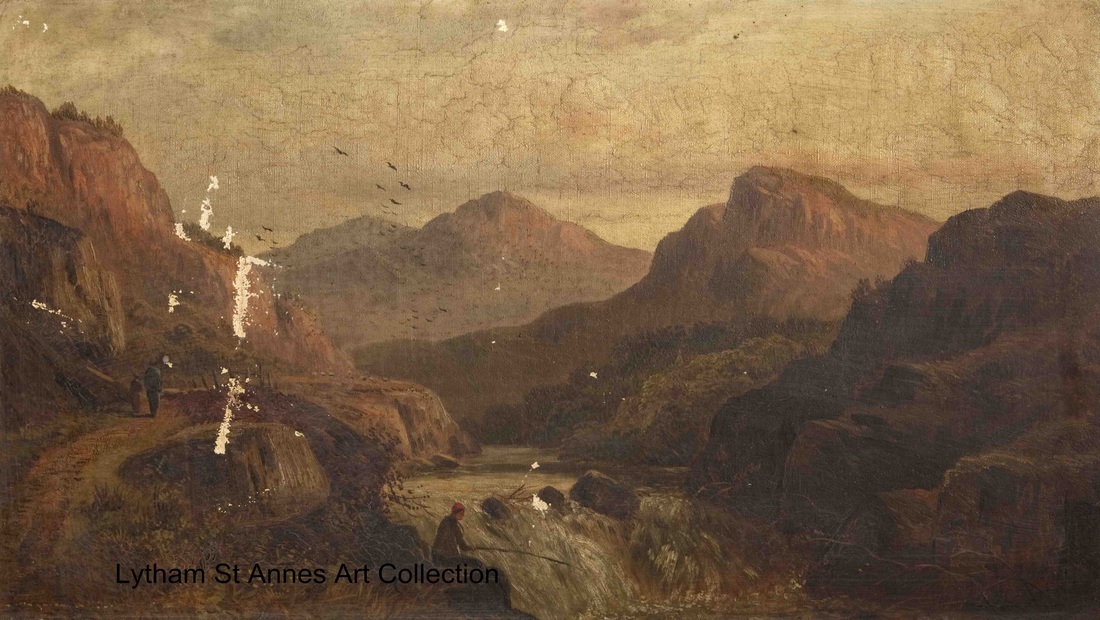View of Glencoe
|
Research by Jean Holland
|
PAINTING
The focal point in this painting of a View of Glencoe is unusually at the front of the scene. A man fishing beside a fast-flowing waterfall stops the eye in the centre of the shallow plane.
The rushing water, carrying vegetation with it, and the dynamic lines of the mountains in the background falling toward the centre of the picture produce a feeling of anxiety and unease. The only static horizontal line in the scene is the surface of the water, low in the centre of the foreground, which quickly disappears behind a steep cliff on the top of which there may be some sheep.
Where does the path, with its two small figures, on the left under the towering rocks lead to?
The wide, heavy sky is reflected in the dark foreboding reds and browns of the water and the mountains, which fade away into the deep plane of the background, adding to the general feeling of unease.
The artist has paid great attention to the detail of the rocks on the right and the flora on the left of the picture using a representational style of brushwork, resulting in strong textural surfaces with the light source coming from behind the far mountains.
The painting has been attributed to Thompson, an artist active in the nineteenth century, due to the similarity in painting techniques displayed in Pandy Mill, Dolgelly, North Wales and which was allocated the following accession number on its acceptance into the Collection. You are able to compare both paintings by clicking on the link.
The focal point in this painting of a View of Glencoe is unusually at the front of the scene. A man fishing beside a fast-flowing waterfall stops the eye in the centre of the shallow plane.
The rushing water, carrying vegetation with it, and the dynamic lines of the mountains in the background falling toward the centre of the picture produce a feeling of anxiety and unease. The only static horizontal line in the scene is the surface of the water, low in the centre of the foreground, which quickly disappears behind a steep cliff on the top of which there may be some sheep.
Where does the path, with its two small figures, on the left under the towering rocks lead to?
The wide, heavy sky is reflected in the dark foreboding reds and browns of the water and the mountains, which fade away into the deep plane of the background, adding to the general feeling of unease.
The artist has paid great attention to the detail of the rocks on the right and the flora on the left of the picture using a representational style of brushwork, resulting in strong textural surfaces with the light source coming from behind the far mountains.
The painting has been attributed to Thompson, an artist active in the nineteenth century, due to the similarity in painting techniques displayed in Pandy Mill, Dolgelly, North Wales and which was allocated the following accession number on its acceptance into the Collection. You are able to compare both paintings by clicking on the link.

